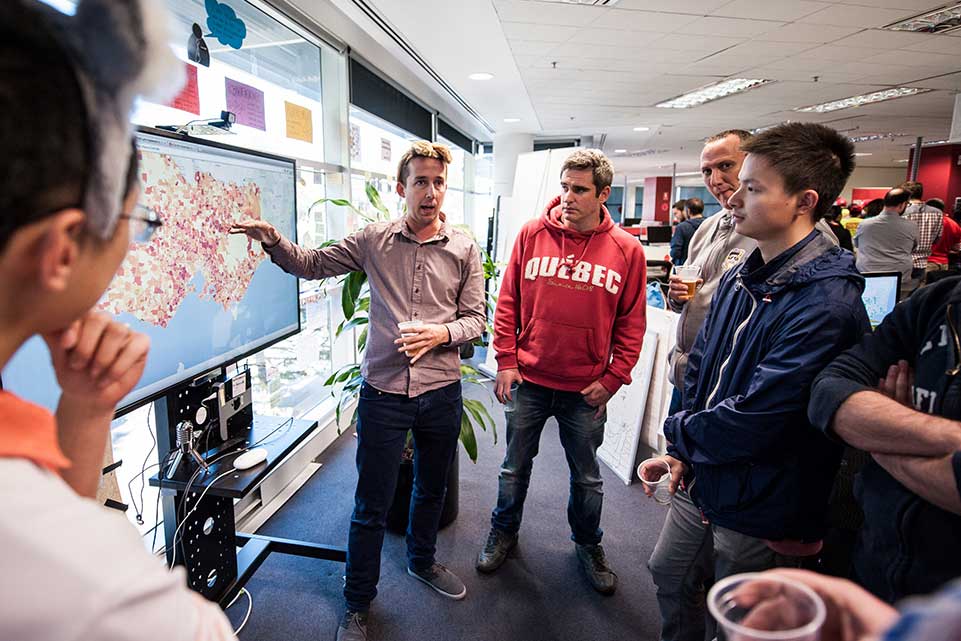REA Group is a multinational digital advertising company specialising in property, which, after more than two decades of growth, has evolved into one of the largest web operations in Australia. REA currently operates the leading residential and commercial property websites in Australia, realestate.com.au and realcommercial.com.au, as well as property sites across the globe.
All of REA’s sites are designed with one purpose: to make property simple, efficient, and stress free. REA’s growing development team is foundational in building the software that propels the company toward this goal. To host code, communicate, scale, and come up with creative technical solutions, REA developers use GitHub Enterprise.

A platform that supports change
REA has experienced a huge amount of growth in the last decade. As the development team grew with the rest of the company, so did the volume of software systems it needed to build and manage. In 2011, Tech Lead Mike Rowe and REA’s developers decided it was time to rethink their process and start looking for a structured version control system that could scale with them.
Version control was becoming increasingly important as the organization structure evolved from a centralized unit into distributed, agile teams. They felt that GitHub Enterprise would make code review easier and support autonomy amid the company’s growth and restructuring. We were hiring people every week, says Tech Lead Mike Rowe. We needed a version control system that could scale and help us work as small, autonomous teams—GitHub is great for that.
To manage developer access, REA uses LDAP and Okta. Rather than having to manually authenticate with GitHub every time we use it, we use Okta as a single sign-on system, Mike explains. It’s hooked up to our Active Directory, so if someone joins or leaves the team, we can manage their account from one place.
Room to experiment with deployment and integrations
REA’s growth has also given developers the opportunity to evaluate their technical infrastructure and find the right tools to support their development process. Mike explains, That’s just the nature of a growing company—we experiment to find that best way of doing things.
The team has integrated Continuous Integration (CI) options such as Travis and Jenkins and chat apps like Slack. One of the biggest changes to their infrastructure has been a move from their own data centers to Amazon Web Services (AWS) with the goal of building the most elastic and reproducible environment possible. We’ve changed the way we work both technically and organizationally, Mike said. It would have been much harder to do without GitHub.
We’ve changed the way we work both technically and organizationally. It would have been much harder to do without GitHub.
The way developers already work
Mike sees GitHub not only as a version control platform but also as an approach to software development that developers know and value. From a hiring perspective, he feels working with GitHub sets REA apart from other businesses recruiting for IT positions.
As he puts it, Using GitHub is a way of telling developers who have an interest in Ruby and in the open source ecosystem that they can continue working the way they already work. You’re not going to run into a clunky enterprise system—just a platform you already know.
Similarly, moving to GitHub was a welcome switch to a familiar platform for REA’s developers. The majority of them had already used Git and GitHub, which made for a smooth transition to a more flexible and collaborative process. It has worked really well, says Mike. We are super happy with it.

